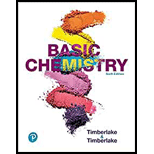
Concept explainers
(a)
Interpretation : The structure of propylasparate, its three-letter abbreviation and one-letter abbreviation needs to be determined.
Concept Introduction : Peptides are
(b)
Interpretation : The structure of threonylleucine, its three-letter abbreviation and one-letter abbreviation needs to be determined.
Concept Introduction : Peptides are polymers of amino acids which are organic molecule with −NH2 and −COOH groups bonded on same C-atom. Each amino acid is bonded wither other through peptide bond. The peptide bond is formed by condensation reaction of −NH2 and −COOH groups that leads to the formation of an amide linkage.
(c)
Interpretation : The structure of methionylglutaminyllysine, its three-letter abbreviation and one-letter abbreviation needs to be determined.
Concept Introduction : Peptides are polymers of amino acids which are organic molecule with −NH2 and −COOH groups bonded on same C-atom. Each amino acid is bonded wither other through peptide bond. The peptide bond is formed by condensation reaction of −NH2 and −COOH groups that leads to the formation of an amide linkage.
Want to see the full answer?
Check out a sample textbook solution
Chapter 18 Solutions
EBK BASIC CHEMISTRY
- Write a generalized structural representation for a peptide bond.arrow_forwardConsider the tripeptide leucylvalyltryptophan. a. Specify its structure using three-letter symbols for the amino acids. b. How many peptide bonds are present within the peptide? c. Which of the amino acid residues has the largest R group? d. Which of the amino acid residues, if any, has a basic side chain?arrow_forwardCompare the structures of the peptide neurotransmitters Met-enkephalin and Leu-enkephalin in terms of a. what they have in common. b. how they differ.arrow_forward
- For the tripeptide GlyAlaCys a. What amino acid is located at the peptides N-terminal end? b. What amino acid is located at the peptides C-terminal end? c. How many peptide bonds are present? d. How many amide linkages are present?arrow_forwardConsider the tripeptide tyrosylleucylisoleucine. a. Specify its structure using three-letter symbols for the amino acids. b. How many peptide bonds are present within the peptide? c. Which of the amino acid residues has the largest R group? d. Which of the amino acid residues, if any, has an acidic side chain?arrow_forwardWhat characteristics indicate that amino acids exist as zwitterions?arrow_forward
- What two functional groups are involved in the formation of a peptide bond?arrow_forwardDraw the structure of each peptide. Label the N-terminal and C-terminal amino acids and all amide bonds. a. Val-Glu b. Gly-His-Leu c. M-A-T-Tarrow_forwardDraw the structure of the short protein: glutamate-leucine-serine.arrow_forward
 General, Organic, and Biological ChemistryChemistryISBN:9781285853918Author:H. Stephen StokerPublisher:Cengage Learning
General, Organic, and Biological ChemistryChemistryISBN:9781285853918Author:H. Stephen StokerPublisher:Cengage Learning Organic And Biological ChemistryChemistryISBN:9781305081079Author:STOKER, H. Stephen (howard Stephen)Publisher:Cengage Learning,
Organic And Biological ChemistryChemistryISBN:9781305081079Author:STOKER, H. Stephen (howard Stephen)Publisher:Cengage Learning, Chemistry for Today: General, Organic, and Bioche...ChemistryISBN:9781305960060Author:Spencer L. Seager, Michael R. Slabaugh, Maren S. HansenPublisher:Cengage Learning
Chemistry for Today: General, Organic, and Bioche...ChemistryISBN:9781305960060Author:Spencer L. Seager, Michael R. Slabaugh, Maren S. HansenPublisher:Cengage Learning Chemistry: Principles and PracticeChemistryISBN:9780534420123Author:Daniel L. Reger, Scott R. Goode, David W. Ball, Edward MercerPublisher:Cengage Learning
Chemistry: Principles and PracticeChemistryISBN:9780534420123Author:Daniel L. Reger, Scott R. Goode, David W. Ball, Edward MercerPublisher:Cengage Learning Chemistry: Principles and ReactionsChemistryISBN:9781305079373Author:William L. Masterton, Cecile N. HurleyPublisher:Cengage Learning
Chemistry: Principles and ReactionsChemistryISBN:9781305079373Author:William L. Masterton, Cecile N. HurleyPublisher:Cengage Learning World of Chemistry, 3rd editionChemistryISBN:9781133109655Author:Steven S. Zumdahl, Susan L. Zumdahl, Donald J. DeCostePublisher:Brooks / Cole / Cengage Learning
World of Chemistry, 3rd editionChemistryISBN:9781133109655Author:Steven S. Zumdahl, Susan L. Zumdahl, Donald J. DeCostePublisher:Brooks / Cole / Cengage Learning





